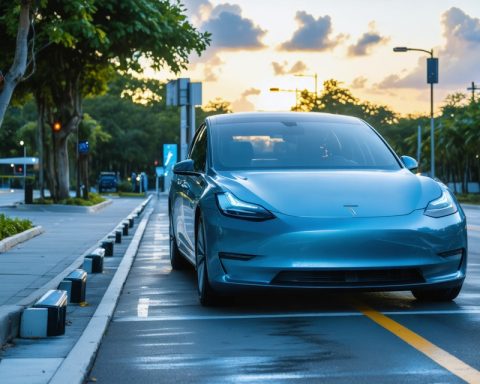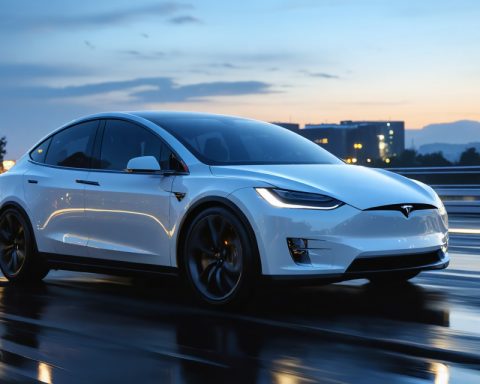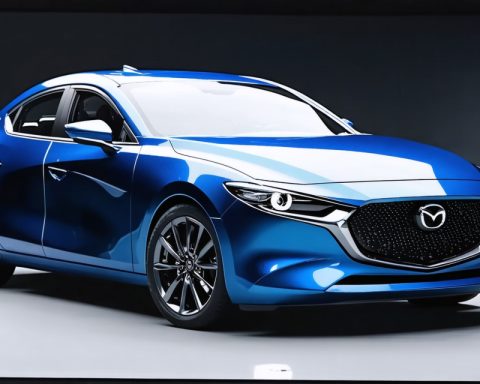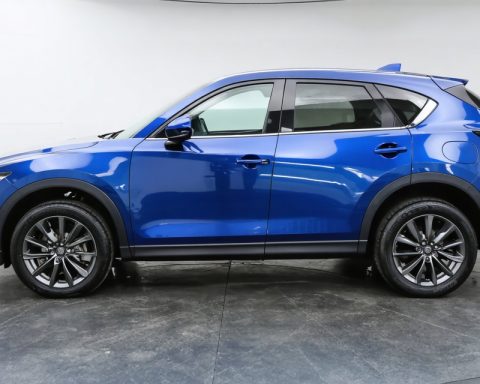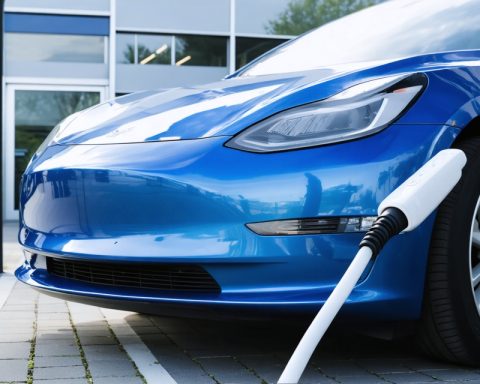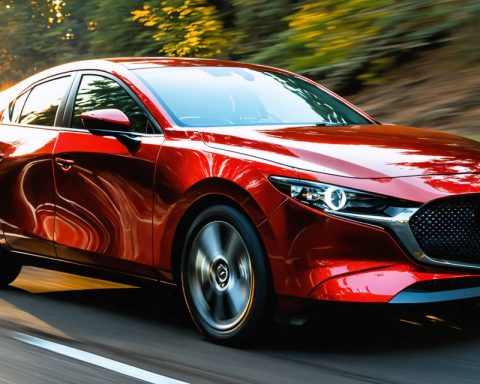- Hungary is experiencing a significant boom in electric vehicles (EV), with remarkable demand driven by supportive government subsidies.
- The Chinese car manufacturer BYD leads the electric vehicle market in Hungary with over 1,500 subsidy applications, followed by Tesla with more than 1,100 applications.
- Other major players such as Hyundai, Volvo, Kia, Volkswagen, and Cenntro are also experiencing growing interest, each with over 250 applications.
- Tesla Model Y is the preferred choice among individual Hungarian buyers, with over 700 applications, while BYD’s ATTO 3 sees around 550 orders.
- Government grants ranging from 2.8 to 4 million forints per vehicle support over 6,800 EV applications, encouraging reduced operating costs and environmentally friendly transport.
- A record 22,000 eco-friendly vehicle registrations in 2023 pushes Hungary’s number of electric cars over 75,000, marking a significant step towards green mobility.
Rolling through Hungary’s vibrant cities and serene landscapes, the whispering quiet hum of an electric revolution takes control. Hungarian businesses are heavily leaning towards a green future, with an extraordinary surge in demand for electric vehicles, led by the Chinese car manufacturer BYD. As the Ministry of Energy reports, over 1,500 subsidy applications for BYD vehicles reveal a remarkable connection, positioning the brand as the undisputed leader in Hungary’s ambitious government-supported EV program. Meanwhile, the American giant, Tesla, closely follows with over 1,100 applications, highlighting fierce competition in the Hungarian EV landscape.
But the competitive spirit doesn’t stop there. Hyundai is also accelerating its way into Hungarian hearts with more than 500 subsidy applications, while well-known names like Volvo, Kia, Volkswagen, and Cenntro rev up their engines, each with over 250 individual applications. This broad interest underscores a significant shift in the nation’s car preferences.
While BYD leads overall, Tesla Model Y captures the imagination of individual buyers, proving itself as the star with over 700 applications. Conversely, the once-popular BYD ATTO 3 has taken a back seat, garnering around 550 orders. Nevertheless, a new competitor, Volvo EX30, emerges as a worthy challenger, pushing its way into the upper ranks of the demand charts.
The broader picture paints even more intriguing insights. With Hungarian businesses submitting applications for around 6,800 electric vehicles in total, BYD and Tesla together account for over a third of these requests. They are recipients of a government initiative offering grants ranging from 2.8 to 4 million forints per vehicle. This initiative not only promotes the purchase of economical alternatives but also envisions a reduced maintenance and operating cost landscape for businesses, all while bolstering environmentally friendly transport.
Record-high figures fill the charts, as 2023 witnesses the introduction of 22,000 eco-friendly vehicles, pushing the number of fully electric cars on Hungarian roads over 75,000. Even as the subsidy deadline approaches at the end of March, the trajectory of the EV market suggests continued growth. It is a testament to Hungary’s determined commitment to sustainable mobility and a cleaner future.
As Hungary weaves its electric dreams into reality, the country stands at the forefront of Europe’s green mobility transition, moving forward not only with cars but with conscience. This new era signifies not just a change in vehicles but a profound shift in perspective, heralding an automotive renaissance with Hungary as a key player.
Hungary’s Electric Vehicle Boom: Unveiling Key Players and Future Prospects
A New Era for Electric Vehicles in Hungary
Hungary is undergoing a remarkable transformation in its automotive industry, driven by a sharp increase in demand for electric vehicles (EV). The country is witnessing a shift towards a greener future, with major players like BYD, Tesla, and others driving this change. Here’s a deeper look at the emerging trends, market insights, and future forecasts for Hungary’s EV industry.
Understanding the Competitive Landscape
1. Dominance of BYD and Tesla
BYD leads the Hungarian EV market with over 1,500 subsidy applications, underscoring the brand’s strong presence. Tesla closely follows with more than 1,100 applications, highlighting its competitive position. These two giants significantly contribute to Hungary’s government-supported EV program.
2. Rising Stars: Hyundai and Volvo
Hyundai and Volvo are making strides with over 500 and notable applications for Volvo EX30. These brands are quickly emerging as formidable competitors in the race, demonstrating Hungary’s diverse car preferences.
3. The Popular Model: Tesla Model Y
Tesla Model Y is a prominent favorite among individual buyers, securing over 700 applications. Its success reflects consumer preferences for high-performance, reliable electric vehicles.
Key Insights and Industry Trends
1. Government Incentives
Hungarian businesses benefit from significant government subsidies ranging from 2.8 to 4 million forints per vehicle. These incentives play a crucial role in accelerating EV adoption by reducing start-up costs.
2. Urban and Rural Adoption
The demand for electric vehicles is not limited to urban areas; rural regions are also embracing the change. This widespread adoption can be attributed to the growing infrastructure for charging stations across the country.
3. Sustainability and Cost Reduction
Electric vehicles promise reduced maintenance and operating costs compared to traditional combustion vehicles, making them an attractive choice for businesses looking to cut costs while promoting environmental sustainability.
Future Prospects and Market Forecasts
1. Continued Growth Trajectory
Hungary’s EV market is poised for sustained growth, with forecasts indicating an increase in sales beyond the 75,000 fully electric cars already on the roads. The government’s commitment to green mobility is expected to drive this upward trend.
2. Technological Advancements
As global EV technologies advance, Hungary is set to benefit from innovations that will further enhance vehicle performance, battery life, and charging capabilities, potentially making electric vehicles even more appealing to consumers.
3. Cross-Border Influences
Hungary’s position in Europe as a leader in EV adoption may inspire similar movements in neighboring countries, reinforcing the region’s collective impact on reducing carbon emissions.
Recommendations for Consumers
– Explore Eligibility for Subsidies: Potential EV buyers should check their eligibility for government grants to take advantage of financial incentives.
– Consider Long-Term Savings: Evaluate the total cost of ownership over time, including lower fuel and maintenance costs, when selecting an electric vehicle.
– Keep an Eye on Charging Stations: Monitor the development of charging facilities to ensure convenient access, especially in remote areas.
Concluding Thoughts
Hungary’s embrace of electric vehicles marks a crucial shift towards an environmentally friendly future. By leveraging government support, technological advancements, and consumer interest, the nation sets a standard for sustainable mobility. As Hungary continues its journey towards a greener future, the country stands as a beacon for progress in the electric vehicle revolution.
Explore more about sustainable transport at BYD and discover Tesla’s innovative solutions at Tesla.


